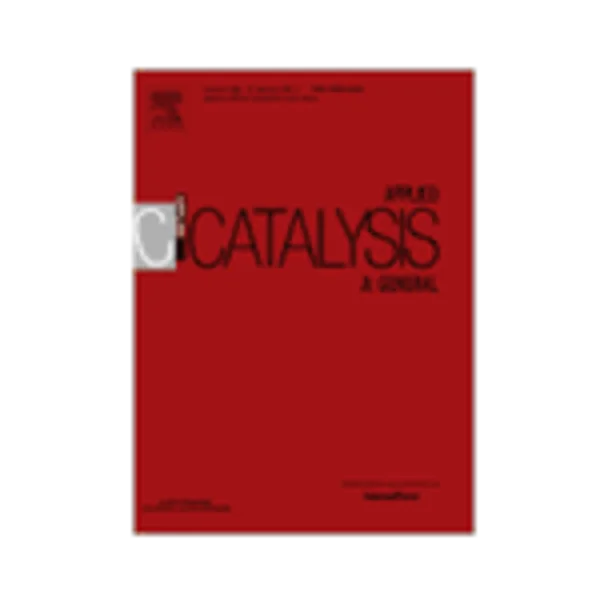-
controlling the selectivity to chemicals from lignin via catalytic fast pyrolysis
جزئیات بیشتر مقاله- تاریخ ارائه: 1392/07/24
- تاریخ انتشار در تی پی بین: 1392/07/24
- تعداد بازدید: 1274
- تعداد پرسش و پاسخ ها: 0
- شماره تماس دبیرخانه رویداد: -
the catalytic fast pyrolysis of alkaline lignin to useful chemicals was investigated using zeolite catalysts with different acidity and pore size. the catalyst played dual roles in this process. in its acid form, it catalytically converted the depolymerized intermediates into desirable and more stable products. this and their surface prevented repolymerization and coke formation. the yield of liquid and the selectivity to desired products can be controlled by tuning of the acidity and pore size of the catalyst. using no catalyst yielded 40 wt.% of liquid, which mainly consisted of 6 wt.% (carbon yield) of phenols and 19 wt.% (carbon yield) of phenol alkoxy species. the highest yield of phenol alkoxy species was obtained over h-zsm5 of extremely low number of acid sites; liquid yield of 51 wt.% and carbon yield of 24 wt.%. the highest yield of liquid (75 wt.%) was obtained over h-usy, which had the largest pore size and lowest si/al ratio, thus the largest number of acid sites among all the catalyst tested; the carbon yield of aromatic hydrocarbons was around 40 wt.% at 650 °c. depolymerized lignin products undergo consecutive reaction to form phenol alkoxy, phenols, and eventually aromatic hydrocarbons.
مقالات جدیدترین رویدادها
-
استفاده از تحلیل اهمیت-عملکرد در ارائه الگوی مدیریت خلاقیت سازمانی و ارائه راهکار جهت بهبود
-
بررسی تاثیر ارزش وجوه نقد مازاد بر ساختار سرمایه شرکت های پذیرفته شده در بورس اوراق بهادار تهران
-
بررسی تأثیر سطح افشای ریسک بر قرارداد بدهی شرکت های پذیرفته شده در بورس اوراق بهادار تهران
-
بررسی تأثیر رتبه بندی اعتباری مبتنی بر مدل امتیاز بازار نوظهور بر نقد شوندگی سهام با تأکید بر خصوصی سازی شرکت ها
-
تأثیر آمیخته بازاریابی پوشاک ایرانی بر تصویر ذهنی مشتری پوشاک ایرانی (هاکوپیان)
-
بررسی تاثیر نسبت ابعادی بر ضریب شکل پذیری قابهای خمشی فولادی
-
مروری بر بازاریابی داخلی و پیامدهای آن در سازمان ها
-
بررسی خرابی های رویه بتنی اپرون قدیم فرودگاه زاهدان (مطالعه موردی)
-
اکتشاف زونهای کارستی آبدار با استفاده از روش ژئوالکتریک مطالعه موردی منطقه سمیرم واقع در استان اصفهان
-
l-methionine modified dowex-50 ion-exchanger of reduced size for the separation and removal of cu(ii) and ni(ii) from aqueous solution
مقالات جدیدترین ژورنال ها
-
مدیریت و بررسی افسردگی دانش آموزان دختر مقطع متوسطه دوم در دروان کرونا در شهرستان دزفول
-
مدیریت و بررسی خرد سیاسی در اندیشه ی فردوسی در ادب ایران
-
واکاوی و مدیریت توصیفی قلمدان(جاکلیدی)ضریح در موزه آستان قدس رضوی
-
بررسی تاثیر خلاقیت، دانش و انگیزه کارکنان بر پیشنهادات نوآورانه کارکنان ( مورد مطالعه: هتل های 3 و 4 ستاره استان کرمان)
-
بررسی تاثیر کیفیت سیستم های اطلاعاتی بر تصمیم گیری موفق در شرکتهای تولیدی استان اصفهان (مورد مطالعه: مدیران شرکتهای تولیدی استان اصفهان)
-
ارزیابی کیفی اطلاعات اینترنتی در حوزه سلامت
-
موانع و کاستی های کنوانسیون ملل متحد در مورد حقوق دریاها در رابطه با مجادله با دزدی دریایی
-
بررسی ارتباطات اثربخش و سکوت سازمانی مطالعه موردی: سازمان آب و فاضلاب شهری خراسان جنوبی
-
مقایسه رفتار لرزه ای سازه فولادی بهسازی شده با سه نوع میراگر ویسکوز، تسلیمی و اصطکاکی در سازه های کوتاه مرتبه، میان مرتبه و بلند مرتبه
-
درآمدی بر مبانی مسئولیت سازمانی از نگاه اسلام




سوال خود را در مورد این مقاله مطرح نمایید :